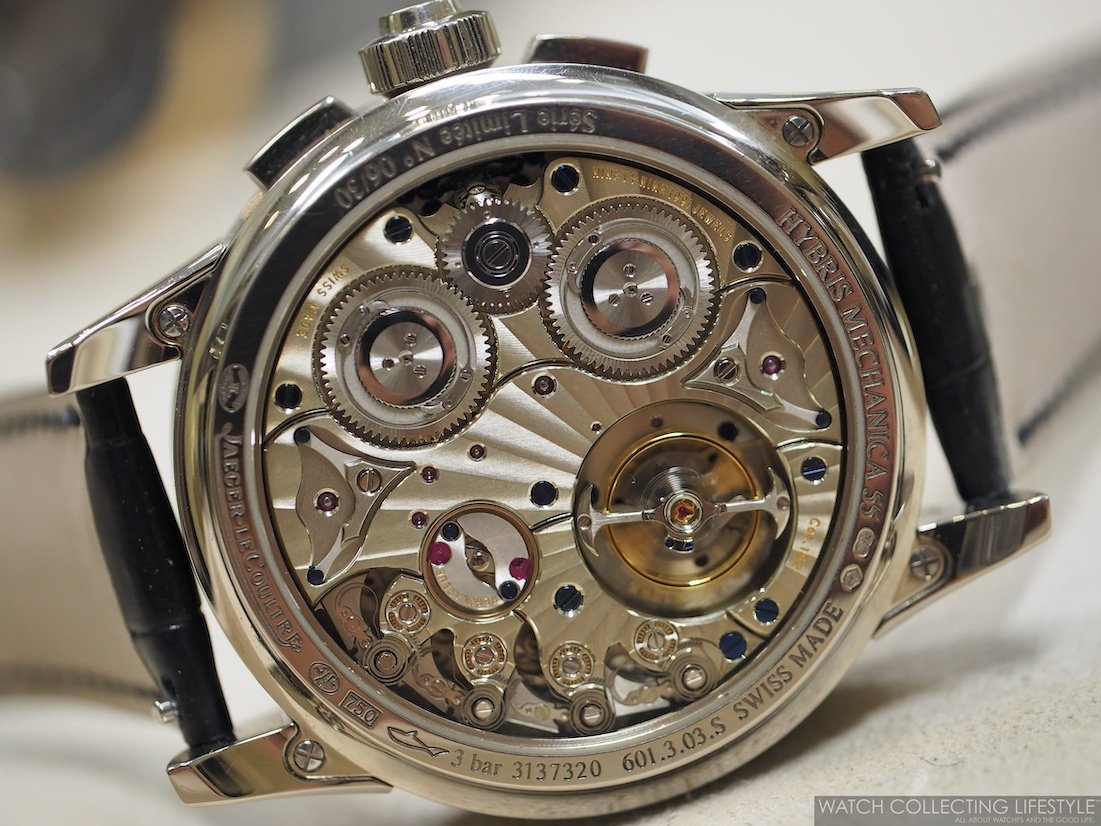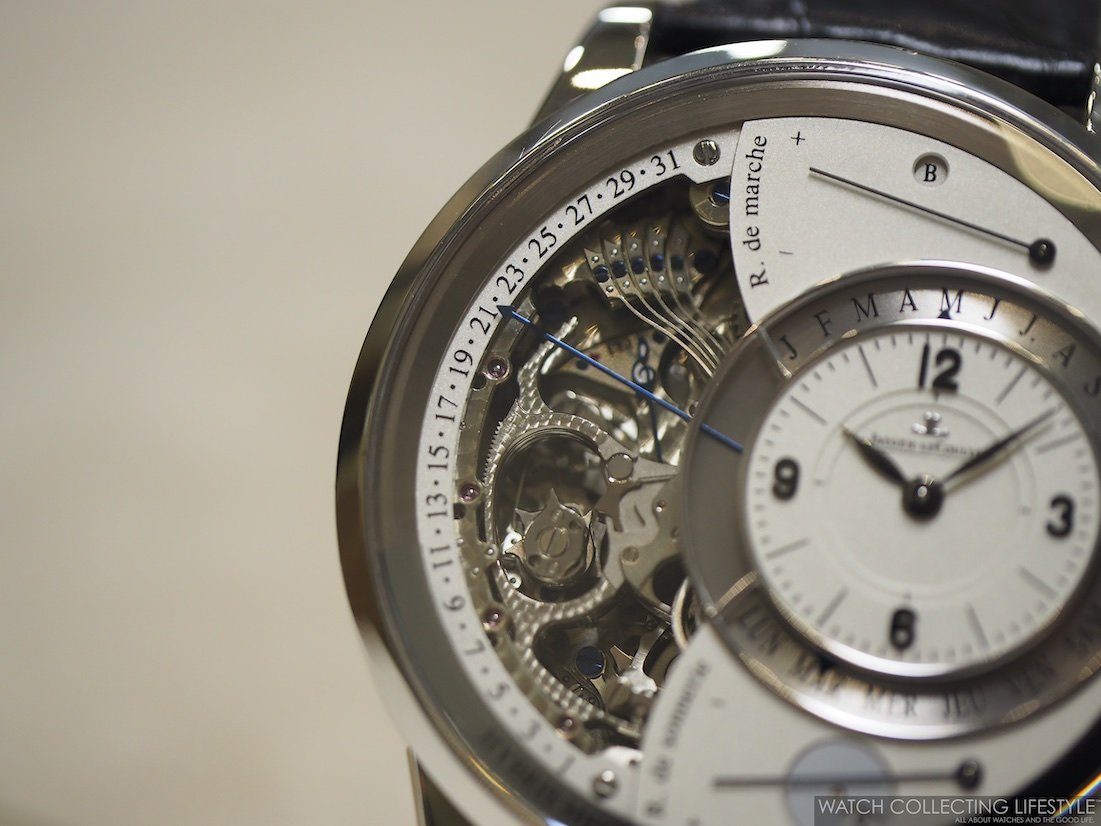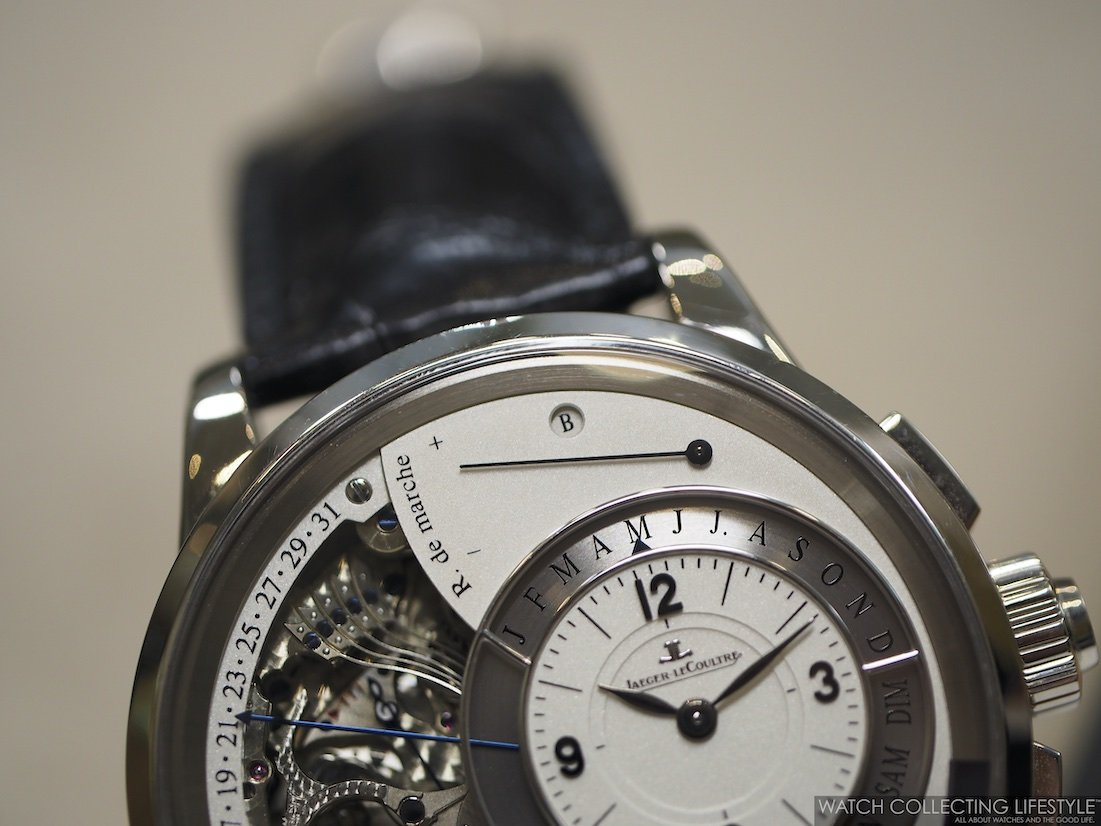Jaeger-LeCoutlre is better known as the ‘Watchmaker of Watchmakers’ and I’ve seen some impressive timepieces from them in the past including the Jaeger-LeCoultre Master Grande Tradition Gyrotourbillon Westminster Perpétuel that I perused in 2019. However, it wasn’t until yesterday at the SIAR 2023 in Mexico City, that I got to peruse for the first time in the metal, the most complex wristwatch ever produced, yes, I am talking about the JLC Hybris Mechanica à Grand Sonnerie first presented in 2009 in a limited edition of 30 pieces. Combining a striking mechanism with Westminster chime, a flying tourbillon and a retrograde perpetual calendar, this watch is a feat of horology of the highest order. Honored to be able to bring you these images and my thoughts about it.
Jaeger-LeCoultre was founded in 1833 by Antoine LeCoultre. Having filed over 200 patents and produced more than 1,200 calibres, this manufacture nestled in Le Sentier in the Vallée de Joux, Switzerland is responsible for some of the most important watch movements ever released in the history of watchmaking and without a doubt without Jaeger-LeCoultre many of the top watch brands wouldn’t be here today.
The Hybris Mechanica collection includes the most elaborate and exceptional calibres resulting in the most complex and innovative timepieces ever produced by Jaeger-LeCoultre. With 190 years of relentless innovation and savoir-faire behind it, Jaeger-LeCoultre continually sets new boundaries in the domain of fine mechanical watchmaking. The result is a highly complex luxury watch, that is innovative, elegant, truly unique but very functional at the same time. Jaeger-LeCoultre is a brand of nonconformists, therefore, design and functionality always go hand by hand.
The Duometre Calibre 182 powering the Hybris Mechanica à Grand Sonnerie is manual wound movement composed of more than 1,300 parts; to put that number in perspective, a grand complication usually includes about 500 to 600 parts at the most. The Hybris Mechanica à Grand Sonnerie has more than double the parts and is for sure the most complex and sophisticated wristwatch movement created at the time of its release. It took five years for this watch to be completed by David Candaux when he worked at JLC.
Along with all the exquisitely finished components, the eye is drawn to the bottom where the four black polished hammers for the grand sonnerie are located and the flying tourbillon make a full rotation every 60 seconds in all its glory.
Cased in a generous 45 mm 18K white gold case with a thickness of only 15 mm, the Hybris Mechanica à Grand Sonnerie is one of the most impressive timepieces I’ve ever perused. Extremely wearable and appealing to the eyes, the perpetual calendar indications for the month and day of the week feature a retrograde mechanism, the partially skeletonized dial brings a level of depth that I’ve only found on Greubel Forsey watches and at a price point of $2.5 Million USD at the time of its release —which included two other highly complicated JLC watches and a luxury safe as a package deal—, it seemed like a bargain compared to what $2.5 Million gets you in watches nowadays.
Today, if you want to special order the Hybris Mechanica à Grand Sonnerie would set you back approximately $1.4 Million USD according to Stéphane Belmont —Patrimony Director at Jaeger-LeCoultre.
Being able to peruse this watch in the metal is for sure one of the most amazing things I have been able to do in my horological journey. As far as finishings and all components visible on the dial side or back of the case, all I have to say is Wow.
As far as the watch functions, the crown features a crown position selector mechanism that is controlled via the bottom pusher on the caseband. This selector allows for the wearer to make selections between winding of the watch, time setting, setting of the perpetual calendar and winding of the chime mechanism. Then to activate the chime, the wearer will use the top pusher on the caseband right above the crown.
A Grande Sonnerie is the most complex of all chiming mechanisms and only a handful are created in the world each year, each one taking almost 12 months to assemble. Calibre 182 offers three different ways of chiming time. The grande sonnerie —‘large strike’— strikes the hours and quarters ‘en passant’ —as they pass; the petite sonnerie —‘small strike’— strikes only the quarter hours —also en passant; and the minute repeater chimes the hours, quarters and minutes on demand. Fitted with four gongs —instead of the usual two in minute repeaters—, it plays all 24 notes of the Westminster chime —the famous melody of London’s Big Ben.
The Jaeger-LeCoultre Hybris Mechanica à Grand Sonnerie features an arc retrograde date indicator with blued pointer between 11 and 7 o’clock, a power reserve indicator for the sonnerie at 6 o’clock, a power reserve indicator for the watch at 12, leap year indicator at 1 o’clock, crown selector indicator at 5 o’clock, off-centered time indication with month retrograde indication at the top and day of the week retrograde indication at the bottom.
On the wrist, this is just pure watch collecting debauchery. An incredible timepiece that only a handful have ever perused and one of the most incredible watches ever created in the world of watchmaking. This is the type of timepiece that make watch dreams worth dreaming. I continue to insist that Jaeger-LeCoultre should be inducted into a ‘Holy Quartet of Watchmaking’ or replace AP from the ‘Holy Trinity of Watchmaking’.
For more info on Jaeger-LeCoultre click here.







































